2021 AutoGuide.com Utility Vehicle of the Year: Meet the Contenders

Utility vehicles continued to dominate the sales charts this year—and here are the best ones.
Even in a year as … unique … as 2020, we saw plenty of new and revised utility vehicles launch. Some were good, but these ones were great, and they represent the finalists of the 2021 AutoGuide.com Utility Vehicle of the Year awards.
For more 2021 AutoGuide.com Awards information, check out the other categories:
- 2021 AutoGuide.com Car of the Year: Meet the Contenders
- 2021 AutoGuide.com Utility Vehicle of the Year: Meet the Contenders
Everybody wants crossovers, it seems. Automakers are scrambling to produce enough to match demand, even crafting new categories to drop them in. A few years ago, it was the coupe-style crossovers (“coupeovers”); now, it’s the plus-sized-sub-compact SUV. It’s not quite a compact—a misnomer on its own these days—but it’s not a straight-forward sub-compact SUV either.
The 2021 Kia Seltos is the best example of this new breed. It majors on the Korean brand’s longstanding reputation for value, offering more interior space than anything else in this fledgling segment. Up in the plain ol’ compact SUV segment, Nissan has given us a whole new Rogue for 2021. The brand’s best-seller needed to be good, as this is the most fiercely competitive segment in America. A high-end interior and a renewed focus on tech makes it a hugely appealing package. Toyota revived the Venza nameplate this year, sticking it on a new two-row SUV that shares its platform with both the RAV4 and Highlander. In terms of size it slots in between the two, but comes only in hybrid form. It’s a very different proposition to the old, overgrown Camry wagon model: this is a smooth cruiser, with enough luxury trappings to make you think twice about buying that Lexus.
Our other two mainstream finalists are both domestic offerings, but couldn’t be more different. The Chevrolet Tahoe and Suburban are both big, bulky three-row SUVs, sitting on modified truck platforms and powered by equally sizeable V8s. But they also come in diesel form, and a redesigned rear suspension vastly improves ride and interior space. Meanwhile, the Ford Mustang Mach-E is a horse of a different color. This all-electric mid-sizer has a goal of bringing EV motoring to the mainstream, with a dash of the fun that the Mustang name promises.
In the luxury fight, we’ve got two Mercedes three-row SUVs: the petite GLB and the gargantuan GLS. They take two different approaches to the layout, but both feel true to the badge, blending luxury with everyday usability. The 2021 Cadillac Escalade is a homegrown foil to the big GLS: no less luxurious, but arguably even more tech crammed in. Land Rover redid the iconic Defender for 2021, keeping its hardcore off-roading ability but adding welcome on-road manners. And lastly, we have the newcomer from Korea, the Genesis GV80. It’s the first big high-rider from the brand, but it’s a deeply impressive one, immediately putting the competition on notice with a smooth drive and the best interior in the class.
Like our other end-of-year awards, this isn’t a head-to-head comparison. We’re comparing each of these models against the standards of their respective classes. Do they shift the needle? They better, not just within their category but, ideally, across the industry. We’ve also only included vehicles our team has driven. That unfortunately means a few models slipped through the cracks that 2020 caused, like the highly anticipated Ford Bronco Sport.
For Car and Utility of the year, we’ve split the award into Overall, Mainstream, and Luxury sub-categories. You’ll find the 10 Utility of the Year finalists below, in alphabetical order. Our team will vote on each category over the coming weeks, and we’ll announce the winners early February. Stay tuned!
Utility of the Year (Mainstream)
2021 Chevrolet Tahoe/Suburban
Chevrolet updated its big rigs this year, with both the Tahoe and Suburban getting new looks, a new rear suspension, and even more imposing dimensions. Naturally there’s more room inside now, but it’s the suspension rethink that’s unlocked the lion’s share of the added passenger space. The third row no longer feels like a penalty box for adults, even in the Tahoe. The independent rear suspension also vastly increases cargo space—plus, it makes for a smoother ride. That’s what we call a win-win.
SEE ALSO: 2021 Chevrolet Tahoe First Drive Review: Raising the StandardBoth of these big boys come with three engine options: two gas V8s and a torque turbodiesel. All three offer serious stump-pulling power: Chevy knows that Tahoe and Suburban buyers use these things for actual towing. The trim options have also ballooned with this generation: the RST, High Country, and Z71 go from being options packages on the previous truck to dedicated trims for 2021. The off-road-ready Z71 currently only comes in V8 form, but Chevy promises the diesel will eventually join the lineup. The Bow Tie predicts the lux High Country and Premier trims will account for most of the sales of these two. That might suggest these rigs could step on the toes of the Escalade—found elsewhere on this page—but Chevrolet says they all cater to distinct parts of the market. The Tahoe definitely has value on its side, starting at barely over $50,000 for a two-wheel drive model, and topping out at $73,000 for the High Country.
2021 Ford Mustang Mach-E
Everyone has an opinion on the 2021 Mustang Mach-E. How could you not? It’s an EV. It’s a coupe-styled crossover. Oh, and it’s got one of the most beloved automotive badges right there on its nose. Yep, that’ll do it.
SEE ALSO: 2021 Ford Mustang Mach-E Review: First DriveThe Mustang Mach-E could have been a marketing disaster. But we’ve driven it, and it’s genuinely good. The Mustang ties are admittedly pretty vague right now—wait for the higher-performance GT model for that—but the Mach-E is hardly the anodyne driving experience some might’ve feared. It rides and steers smoothly, with the near-silence only an EV can manage. Power ranges from 266 to 346 horsepower, depending on battery size and rear- or all-wheel drive. Pair the long-distance battery with rear-drive and you’re looking at 300 miles (482 km) of range per charge. DC fast-charging offers up 60 miles (96 km) of range in 10 minutes, or a refill to 80 percent in 45. Ford has also taken a step forward on the infotainment front, fitting the Mach-E with a huge, tablet-style screen in the middle of the dash. Very subtle, guys. A secondary screen sits in front of the driver, carrying all the pertinent information. Next year, the Blue Oval’s own take on semi-autonomous driving will arrive on the Mach-E. All this starts at $43,995 ($52,395 CAD) before any green-car incentives.
2021 Kia Seltos
Kia just can’t miss these days. There was the Stinger. Then the Telluride. This year the Korean brand went smaller for both cars and crossovers, dropping the excellent K5 and this, the Seltos. In an age of ever-growing models, the Seltos asks the serious question: do you really need a “compact” crossover?
SEE ALSO: 2021 Kia Seltos EX Review: Where Do Its Priorities Lie?This pint-size model offers nearly as much passenger and storage space as the next class up, in a more manageable footprint. All but a single trim comes with standard all-wheel drive, a feature that’s not as common as you’d think, especially in this end of the market. Kia bundles in plenty of driver assists and amenities too, including an available wireless charging pad, auto climate control, Highway Driving Assist, and the Telluride’s large, 10.25-inch infotainment screen. Despite all these big-car features, pricing starts at $23,110 ($24,790 CAD), and tops out under $30,000 all-in ($34,390 CAD). Again, we ask: do you really need a compact crossover?
2021 Nissan Rogue
Nissan needs the 2021 Rogue to be good. It’s the brand’s best-selling model, competing in the largest, most cut-throat segment in the market. The Japanese brand has thoroughly overhauled this SUV, starting with a stiffer, more modern platform as a foundation. From there it’s layered on better NVH, more assertive styling, a premium-feeling interior, and lots of screen real estate.
SEE ALSO: 2021 Nissan Rogue Review: First DriveThe Rogue is all about the details. Take the available quilted leather seats: where else are you going to find that in this class? How about the rear doors, which open to nearly 90 degrees, making it easier for the very young and very old alike to get in and out? Nissan has clearly given some thought to how people use their crossovers on a daily basis.
A single engine option exists for the Rogue: a 2.5-liter four-cylinder, hooked up to a CVT, sending power to either the front axle or both. Pricing starts at $26,745 ($30,328 CAD), including destination, stretching to around $40,000 on either side of the border.
2021 Toyota Venza
Talk about a glow-up. The old Venza was an unloved model arguably ahead of its time: it predicted the oncoming onslaught of car-based crossovers. In that sense, this reborn Venza is more of the same, but it’s traded the ungainly looks of old for a svelte, stylish wrapper. More importantly, it also comes with just one drivetrain option: a hybrid-powered AWD setup.
SEE ALSO: 2021 Toyota Venza Review: First DriveWith 219 horsepower, the Venza isn’t the quickest of the larger two-row SUV crowd. But you’re unlikely to notice, as this is a ride tailor-made for calm cruising. You’ll probably need to stop for your own reasons before it needs gas too, since the Venza posts an impressive 39 mpg average (6.1 L/100 km). The interior is a great place to spend hours in, thanks to high-quality materials and what is easily the Venza’s coolest feature: the “Star Gaze” electrochromic glass roof, which goes from frosted to clear at the touch of a button. The Venza nails the premium feeling so well we can’t think of a single reason to buy the Lexus NX over it. Pricing starts at $33,645 ($40,330 in Canada).
Utility of the Year (Luxury)
2021 Cadillac Escalade
The Escalade has gone widescreen. Cadillac’s de facto halo model benefits from all the same improvements as its proletariat Chevy siblings up-page, but naturally gets its own add-ons to justify the inflated price tag. The easiest to spot inside this beast is the huge 38-inch digital screen, spanning most of the dashboard. It feels suitably high-tech, and easily a match for the systems you find in the German competition. An available night vision setup is invaluable on dark roads, and soon, GM’s industry-leading Super Cruise system will join the Escalade’s bounty of features.
SEE ALSO: 2021 Cadillac Escalade Review: Ghost ProtocolWith a powerful 6.2-liter V8 underhood (a 3.0-liter diesel is also available), the Escalade is the definition of effortless progress. It rides with a level of grace seemingly impossible for something the size of a city condo, thanks to the one-two of the independent rear suspension and the standard air suspension. Pricing starts at a heady $77,490 ($91,998 CAD), but the Escalade feels worth it. As managing editor Kshitij Sharma says, “Cadillac has created something worthy of a standing ovation.”
2021 Genesis GV80
The year kicked off with the debut of the Genesis GV80, the Korean brand’s first SUV, so it feels poetic to now end on it. Genesis spent the last few years establishing its luxury sport credentials with its sedans, including the G70, our 2019 Car of the Year. It couldn’t avoid the way the industry winds were blowing though, and the GV80 is at least as impressive for its class as that car was for sport sedans two years ago.
SEE ALSO: 2021 Genesis GV80 Review: First DriveWhat’s immediately striking about the GV80 is how holistic it feels. Everything meshes together. The styling—the first clean-sheet example of Genesis’ “Athletic Elegance” look—makes a strong statement on the road, imposing but not brash. The ride is smooth: not as sporty as the competition (and we’re not even talking the M and AMG variants), but calm, collected, and very quiet. A whole new infotainment system ditches the borrowed-Hyundai setup of old, with pretty menus and a low learning curve. Best of all is the interior itself, plush and inviting no matter which perch you find yourself in. Some things don’t change, though: in this case, it’s Genesis’ reputation for value, with the GV80 starting at just under $50,000 ($65,000 CAD). It’s a designer bargain, like a Zegna suit at Zara pricing.
2021 Land Rover Defender
The Land Rover Defender is an icon. It’s no wonder it took the British company what felt like eons to replace it. This new-age Defender is different in a lot of ways, but what hasn’t changed is its ability to make short work of gnarly off-road trails. Under those smoother, modern looks is a gloriously complicated chassis which makes that possible.
SEE ALSO: 2020 Land Rover Defender 110 Review: First DriveThe interior experience is also bang up to date, thanks to inspired material choices, a clean dash design, and—thankfully—a new touchscreen interface. The Defender feels like a genuinely premium item, which makes sense now that pricing starts over $50,000 ($65,000 CAD). Despite that, you can still hose the interior down after a particularly adventurous trail.
A mild-hybrid, twin-charged inline-six engine powers the Defender 110, producing 395 hp and 406 lb-ft of torque. That’s plenty to ford streams with, but more importantly, it turns the Defender into a smooth highway cruiser in-between your amateur cartographer sessions.
2021 Mercedes-Benz GLB
Mercedes has plugged the gap between GLA and GLC, both of which are two-row crossovers, with this, the three-row GLB. Are you confused? Yeah, so were we, until we drove it. The GLB makes almost too much sense. The optional way-back is designed for occasional use: a sticker on the rear doors makes it clear those much over 5’6″ shouldn’t even attempt it. That’s fine: those looking to buy this affordable little ‘ute probably aren’t shuttling most of an adult baseball team from A to B. But if they have two kids, and both want to bring a friend? You’ve got a solution, all in a footprint barely bigger than a RAV4.
SEE ALSO: 2020 Mercedes-Benz GLB 250 Review: Scratching the NicheThe GLB is just as easy to drive as other smaller Mercs, too. It uses the same basic platform as the excellent A-Class, providing it with a smooth, easy-going road demeanor. Available all-wheel drive (standard in Canada) ensures foul-weather security, too. A turbocharged 2.0-liter sits under the bluff nose, pushing out 221 hp in GLB 250 guise, or 302 hp for the hotter GLB 35 AMG. Fuel efficiency is better than most other non-hybrid three-rows on the market, averaging 26 mpg (9.0 L/100 km).
Best of all, the GLB is one of the most affordable ways into Merc ownership, starting at around $37,000 ($45,000 CAD). A luxury German model that’s not just practical, but affordable? It’s what makes the GLB so easy for us to recommend.
2021 Mercedes-Benz GLS
Mercedes scores not just one but two finalists spots thanks to this, the GLS. The gargantuan SUV saw a full redesign in 2020, finally stepping into the role as the S-Class of the brand’s SUV lineup.
SEE ALSO: 2020 Mercedes-Benz GLS 580 Review: Wafting WunderkindSure, there’s an AMG version of this big boy, because of course there is, but don’t fall for it. The GLS is all about pampering. In GLS 580 trim, it pairs a slightly detuned version of the AMG’s turbocharged V8 to a mild-hybrid system, seamlessly providing even more torque when requested. An electronically-controlled air suspension smothers anything the road can throw at it, helping the GLS glide serenely across vast stretches of land. Best of all, the brand’s excellent MBUX infotainment system is present here, offering myriad customization options, quick responses, and lots of eye candy. Pricing starts at a suitably Merc-like $77,000, or just shy of six figures in Canada. Even optioned-up, the GLS feels worth it.
Become an AutoGuide insider. Get the latest from the automotive world first by subscribing to our newsletter here.

Kyle began his automotive obsession before he even started school, courtesy of a remote control Porsche and various LEGO sets. He later studied advertising and graphic design at Humber College, which led him to writing about cars (both real and digital). He is now a proud member of the Automobile Journalists Association of Canada (AJAC), where he was the Journalist of the Year runner-up for 2021.
More by Kyle Patrick




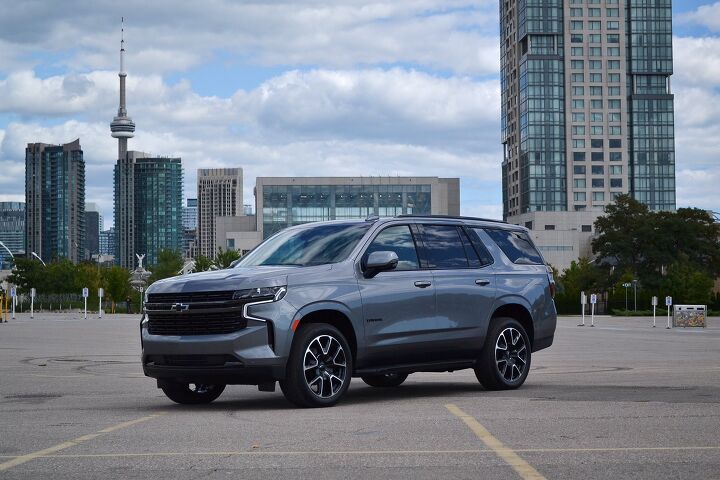






















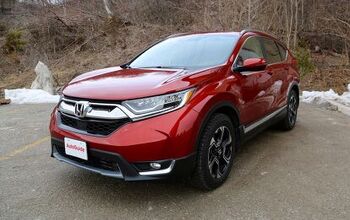
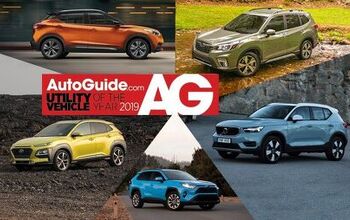


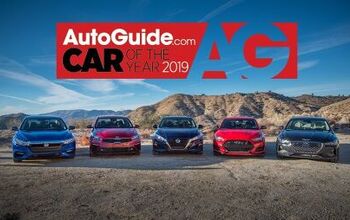


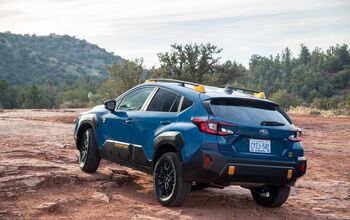
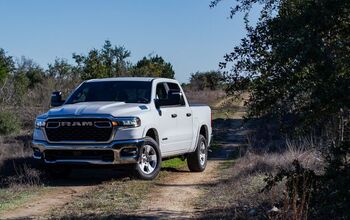



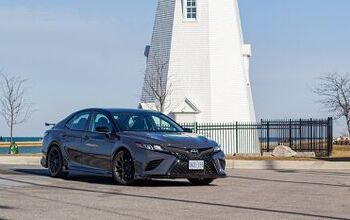
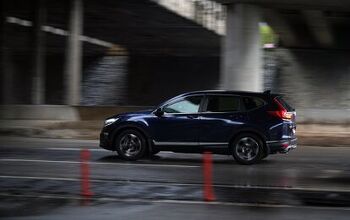
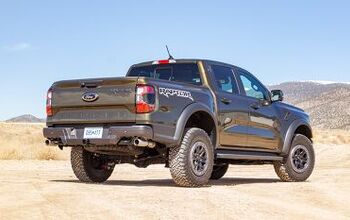
Comments
Join the conversation